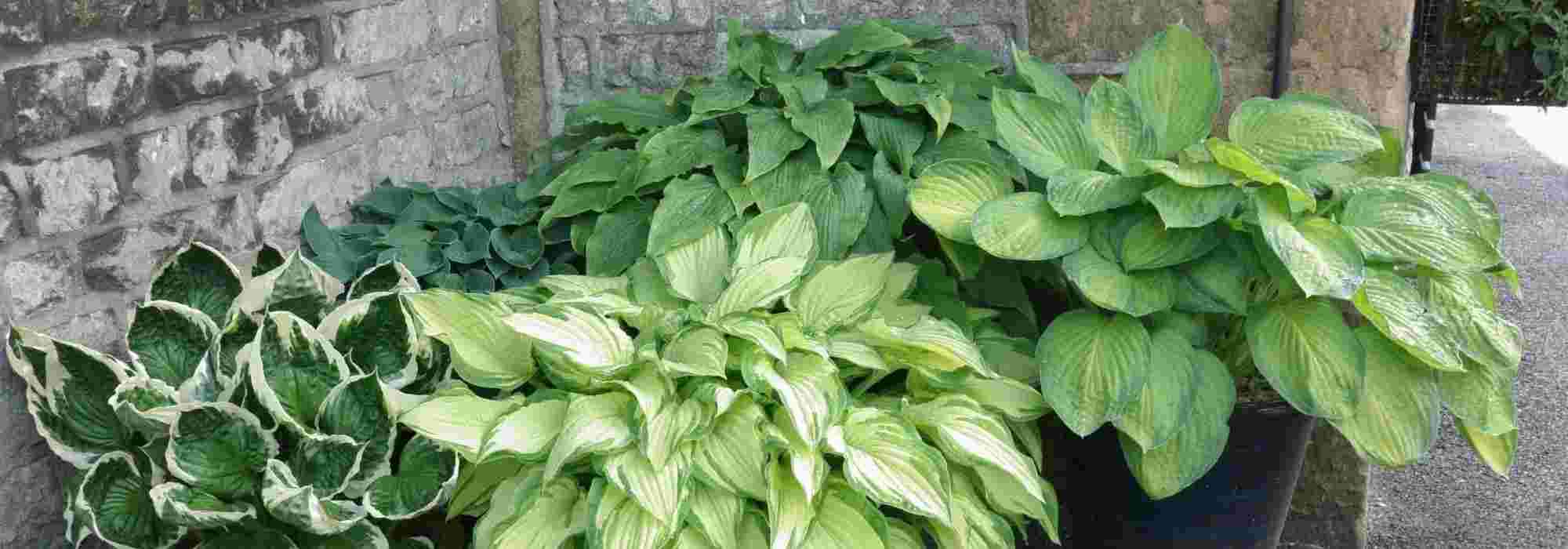
Planters and pots for shade: 5 planting combinations
to put it together
Contents
Don’t despair about brightening a shaded terrace or balcony! You can still fill them with potted plants; you just need to choose them well.
Which plants for a planter (or any other container) in the shade? Your choice will naturally fall on shade-loving plants or flowers such as ferns, hostas, begonias, fuchsias, impatiens, lobelias, ivies or heucheras. This list is not exhaustive; many others exist.
You can combine any of these plants according to your taste and the effect you want to achieve. Let your imagination run wild. And if you’re stuck, don’t panic… Discover our ideas for shade arrangements.
Hanging basket
For this warm-toned composition, use a hanging basket — it will look splendid! Place hosta, fern and mimulus on one side: mimulus will cascade slightly.
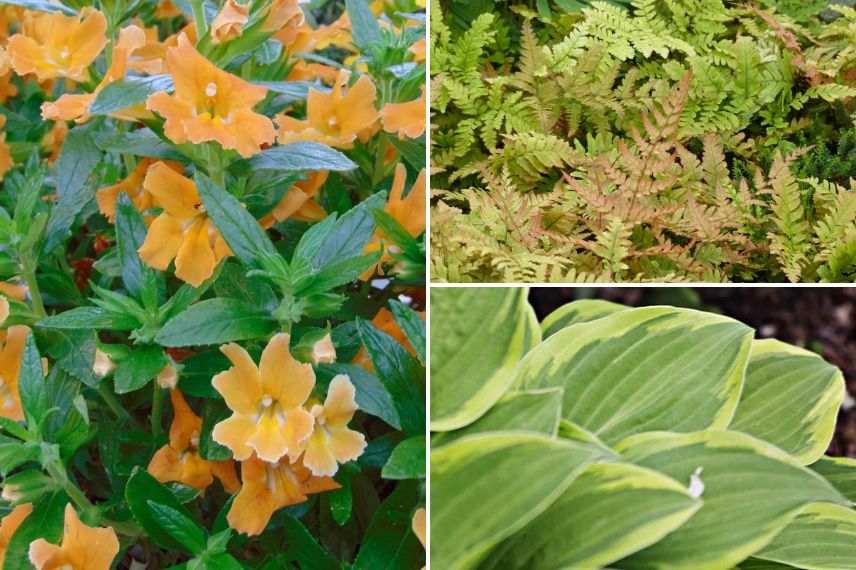
Idea No. 1: Mimulus ‘Burst Orange’ (or ‘Highland Yellow’ would also look lovely), Dryopteris erythrosora and Hosta ‘Fragrant Dream’
Planting and care
Plants require no special care. When planting, use humus-rich potting compost and do not let it dry out in summer. These are perennial plants that return each year. You can reuse them from one year to the next to create other compositions; you just need to take care to bring mimulus indoors to protect from frost (do not let its rootball dry out in winter either). Finally, you can add a little organic fertiliser during flowering.
Read also
10 plants to create a shady rockeryGenerous, colourful planter
Colour lovers can rejoice; fuchsias, begonias and impatiens are generous, colourful shade flowers. Moreover, shade will bring out beautiful colour tones.
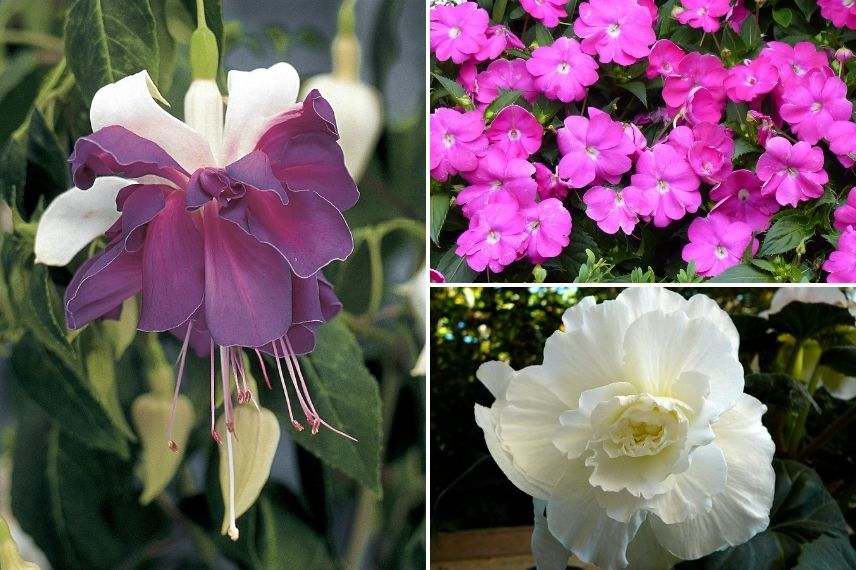
Idea no. 2: Fuchsia ‘Deep Purple’, Impatiens ‘Compact Hot Lilac’ and Begonia grandiflora White
Planting and care
Place a layer of drainage material in bottom of pot. Use a fairly rich, light potting compost and allow compost to dry out between waterings to avoid risk of rot!
- Fuchsia
At end of season, prune fuchsia to half its height then overwinter in frost-free conditions.
- Impatiens
In spring, simply cut stems back to ground level to encourage new shoots.
- Begonia
Begonia tuber has a hollow side and a rounded side. Plant with hollow side facing upwards (slightly tilted so water does not collect and rot the tuber) and cover with 5 cm of compost. As with dahlias, tubers can be forced, i.e. potted from February for planting out in May. Before first frosts, tubers should be stored in a little turf, kept dry and cool over winter.
Finally, water regularly and apply liquid feed at planting then twice a month during season.
Minimalist container planting
This is more a play of textures and foliage than of flowering, even if the geranium’s white flowers add a notable touch of light. Ivy will tend to cascade prettily from the pot.
Planting and care
Plants are perfectly hardy; this container can overwinter outdoors without any problem. In summer, growing medium must stay cool and moist! At end of flowering, cut back geranium to encourage plant to produce fresh foliage and trigger new flowering. This plant is really easy to grow and requires little maintenance. Cut away old fern fronds when growth resumes in spring.
Light planter
Here is a fresh, bright display! Tiarella is a fabulous perennial, easy to grow and perfect in a pot. It has beautiful green leaves maculated with purple and its pink‑then‑white flower spikes draw the eye in May–June. Plant it with a silver‑leaved Brunnera such as ‘Jack Frost’ with delicate forget‑me‑not‑blue flowers or ‘Mr Morse’ if you prefer white‑flowered version. Add an ornamental grass — Hakonechloa are really at ease in shaded areas and in pots. I particularly like variety ‘All Gold’ for its uniformly golden foliage, but you can choose whichever you like. Finish with an no less superb Corydalis. These are perennial plants too rarely planted in gardens and which also suit pots well. Corydalis has delicate foliage and pretty tubular flowers from May to July.
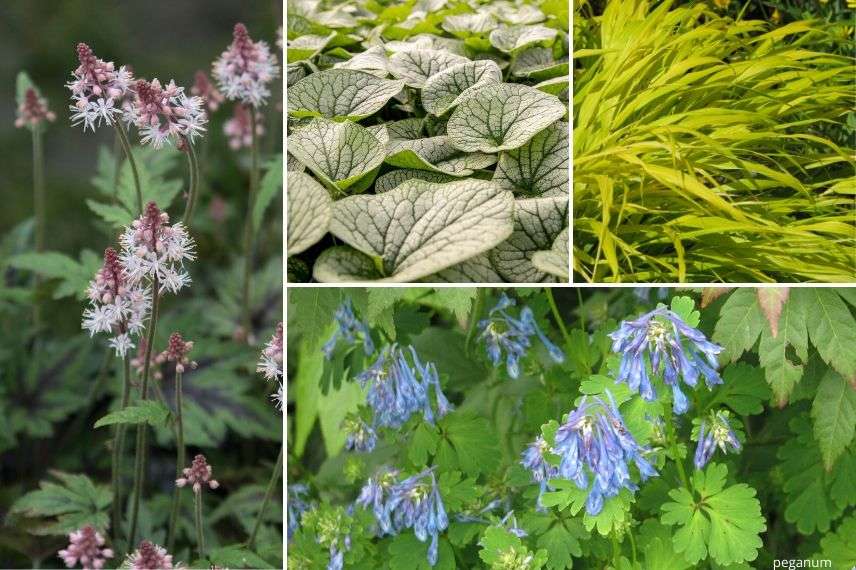
Idea 4 : Tiarella ‘Sugar and Spice’, Brunnera macrophylla ‘Jack Frost’, Hakonechloa macra ‘All Gold’ and Corydalis flexuosa ‘Purple Leaf’
Planting and care
These plants are easy to care for and require no special attention. Just keep substrate moist. Do note, however, that Corydalis disappears after flowering. Nothing abnormal — it goes into dormancy and reappears in autumn.
Winter planter
To create this container, choose Helleborus nigercors ‘Emma’. This variety is very floriferous and truly undemanding. In winter, numerous buds give way to superb white then purple-pink flowers. It will be set off by the twisted foliage of a Leucothoe with colours changing through the seasons: purple at bud burst period (in cold season, otherwise it retains its foliage in winter), deep green before blushing again in autumn/winter. Finally, add a trailing grass such as Carex ‘Everillo’ with yellow foliage that delights in playing with the slightest ray of winter sun.
Planting and care
Use a large pot from the start; these plants need at least some room. For care, cut Helleborus leaves when flower buds begin to appear. You can also remove spent flowers. Finally, simply ensure your substrate is moist but well drained.
Some additional tips
- Choose good-quality potting compost from our selection of potting composts perfect for window boxes and pots
- Remember compost dries quickly in pots, especially if they are small.
- Don’t neglect fertiliser and read our advice sheet to choose the right fertiliser for your potted plants and window boxes.
- Also read if you buy your plants as plug plants: How to plant window boxes and hanging baskets with annuals in plug plants?
- Subscribe!
- Contents
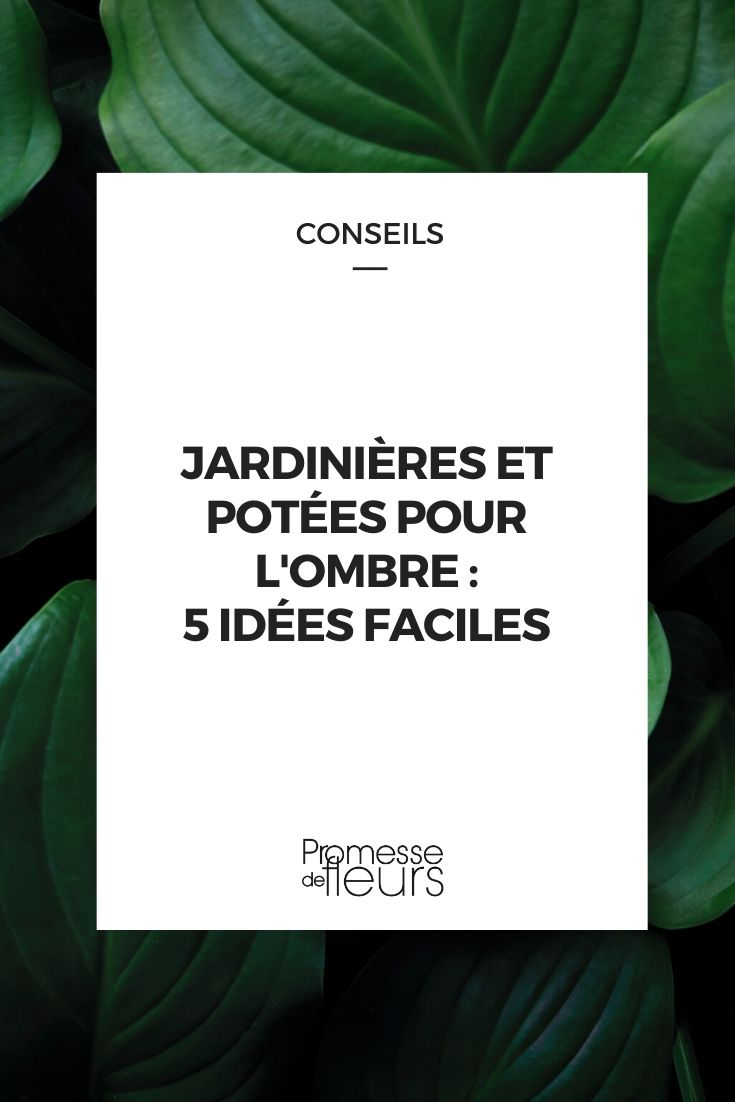































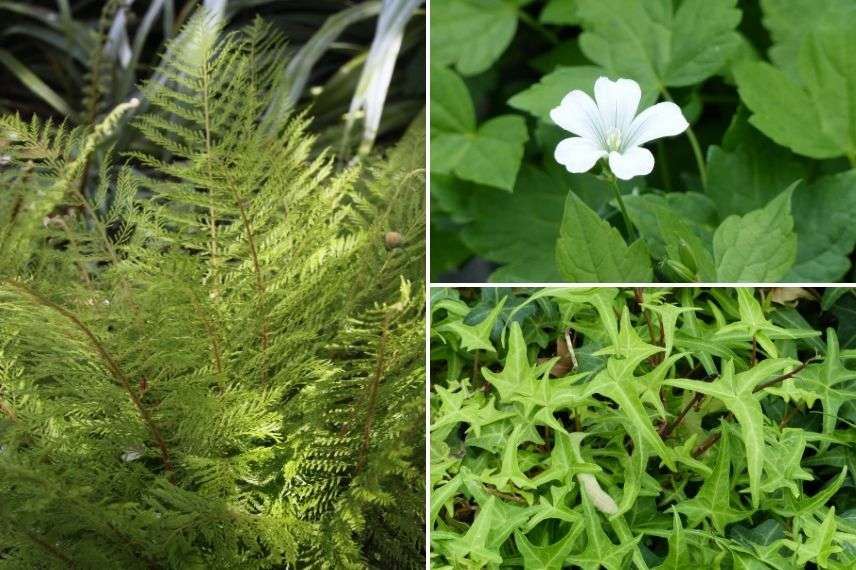
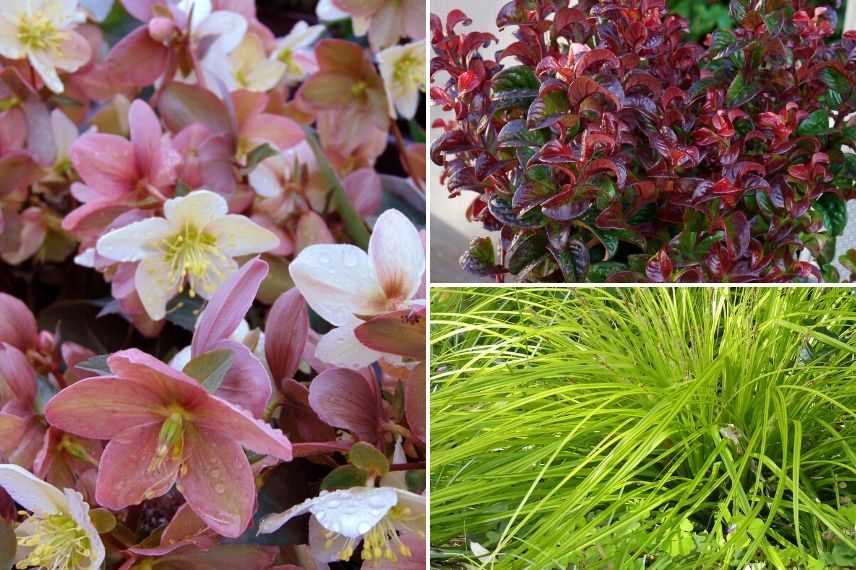
Comments